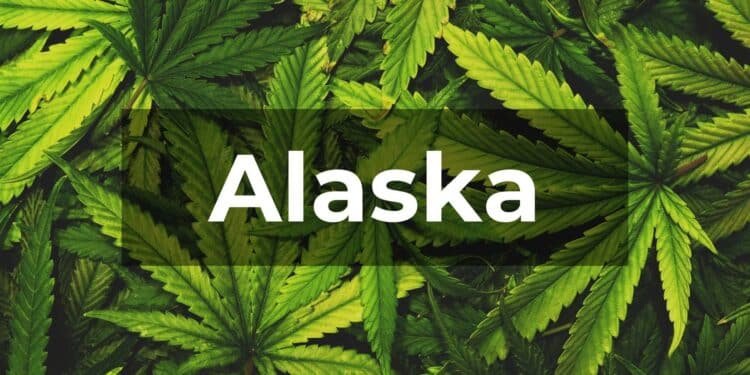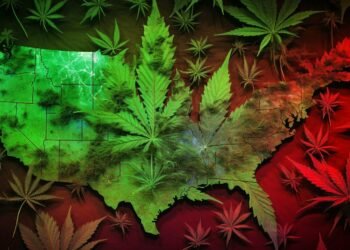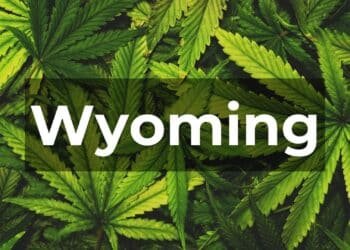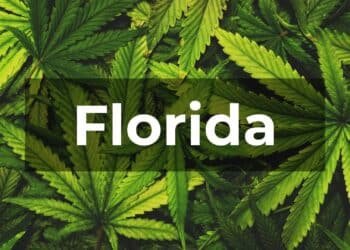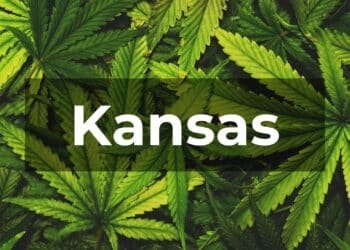Welcome to our comprehensive guide to marijuana legalization in Alaska. As the use of marijuana continues to gain acceptance and become legal in many states across the United States, many are wondering about its legality in Alaska. In this article, we will explore the various laws and regulations in place governing the use, possession, and sale of marijuana in Alaska.
If you are a resident of Alaska or planning a visit to the state and are curious about the status of marijuana legalization, this guide is for you. From medical marijuana to recreational use, we will cover everything you need to know about marijuana in Alaska.
Alaska Marijuana Laws
Alaska became the third state in the US to legalize the use, possession, and sale of recreational marijuana in 2015, following Colorado and Washington. Under Alaska law, individuals who are 21 years of age or older are legally permitted to purchase, possess, and consume up to one ounce of marijuana at a time.
Medical marijuana has been legal in Alaska since 1998, when the Alaska Medical Marijuana Initiative was passed. This allows for individuals with certain medical conditions to use and possess marijuana for medicinal purposes. To be eligible for medical marijuana, patients must be diagnosed with a qualifying medical condition and receive a written recommendation from a licensed physician.
| Recreational Marijuana | Medical Marijuana |
|---|---|
| Individuals 21 years of age or older may purchase, possess, and consume up to one ounce of marijuana at a time. | Medical marijuana is legal for individuals with qualifying medical conditions and a physician’s recommendation. |
| It is legal to grow up to six marijuana plants, with no more than three being mature, for personal use. | Patients may possess up to one ounce of marijuana and cultivate up to six plants (three mature) for personal use, with certain exceptions. |
| Smoking, vaping, and consuming edibles are all legal under Alaska law. | Patients may use medical marijuana in any form permitted by their physician. |
Despite marijuana being legal in Alaska, it is still a federal offense to possess, use, or sell marijuana under current US law. However, the federal government has largely deferred to individual states to legalize and regulate marijuana, leading to a patchwork of differing laws across the country.
Recreational Marijuana in Alaska
Recreational use of marijuana has been legal in Alaska since February 2015, when it became the third state in the US to legalize the substance for recreational use. Under Alaska law, individuals 21 years of age and older are allowed to possess up to one ounce of marijuana and grow up to six plants for personal use. It is also legal to share up to one ounce of marijuana with another person who is 21 years of age or older, as long as no money is exchanged.
While recreational use is legal, there are some restrictions on where marijuana can be used and how much can be possessed. For example, smoking or consuming marijuana in public places is not allowed, and possession of more than one ounce of marijuana can result in criminal charges.
History of Recreational Marijuana Legalization in Alaska
Efforts to legalize marijuana in Alaska began in the 1970s, but it was not until 2014 that voters approved a ballot measure legalizing recreational use of the substance. The measure passed with 53% of the vote and went into effect in February 2015, making Alaska the third state in the US to legalize recreational marijuana.
“I think Alaskans should be able to have the same freedoms as other states in the country,” said Tim Hinterberger, a sponsor of the ballot measure. “We’re not talking about opening the floodgates here. We’re talking about adults using marijuana in the privacy of their own homes.”
Since legalization, Alaska has been among the top states in terms of the percentage of residents who use marijuana. In 2019, a survey found that 19.2% of Alaskans reported using marijuana in the past month, the third-highest percentage in the US behind Vermont and Oregon.
Medical Marijuana in Alaska
Alaska legalized medical marijuana in 1998 under Ballot Measure 8, making it one of the first states to do so. Patients with qualifying medical conditions can apply for and receive a medical marijuana card, which allows them to purchase and possess cannabis products from licensed dispensaries in the state.
To qualify for a medical marijuana card in Alaska, patients must have a qualifying medical condition, such as cancer, chronic pain, glaucoma, Crohn’s disease, or post-traumatic stress disorder (PTSD). They must also be Alaska residents and have a signed recommendation from a licensed healthcare provider.
Alaska has specific rules and regulations surrounding medical marijuana, including limits on the amount of marijuana a patient can possess at one time and restrictions on where it can be used. Patients are also not allowed to grow their own marijuana plants unless they live more than 25 miles away from the nearest dispensary.
Obtaining a Medical Marijuana Card in Alaska
The process of obtaining a medical marijuana card in Alaska involves a few steps. Patients must first obtain a signed recommendation from a licensed healthcare provider, which must include the provider’s name, license number, and contact information. They must then submit an application to the Alaska Bureau of Vital Statistics, along with a copy of their recommendation and a $25 application fee.
Once the application is approved, the patient will receive a medical marijuana card, which is valid for one year. They can then purchase marijuana products from licensed dispensaries in Alaska.
It is important to note that medical marijuana is not covered by insurance in Alaska, so patients are responsible for the cost of their cannabis products.
Alaska Marijuana Regulations
While marijuana may be legal in Alaska, there are still specific regulations that govern its use, possession, and sale. Here are some important things to know:
| Regulation | Details |
|---|---|
| Legal Age | You must be at least 21 years old to purchase, possess, or consume marijuana in Alaska. |
| Possession Limits | Individuals can possess up to one ounce of marijuana and six plants (with no more than three being mature) in their personal residence. |
| Public Consumption | It is illegal to smoke or consume marijuana in public places, including streets, parks, and sidewalks. |
| Driving Under the Influence | Driving under the influence of marijuana is illegal in Alaska and can result in fines and license suspension. |
| Sales and Distribution | Marijuana can only be sold and distributed by licensed dispensaries and retail stores in Alaska. |
It’s important to familiarize yourself with these regulations to ensure that you are using and possessing marijuana safely and legally in Alaska.
Alaskan Marijuana Dispensaries
Since the legalization of marijuana in Alaska, the state has seen an increase in the number of licensed marijuana dispensaries. These dispensaries are regulated by the state and must obtain a license to operate.
Currently, there are over 200 licensed marijuana dispensaries in Alaska, providing both medical and recreational marijuana products. These dispensaries must follow strict regulations regarding the sale and distribution of marijuana, including verifying the age of customers and limiting the quantity of marijuana that can be purchased.
Regulations and Licensing
Alaskan marijuana dispensaries must adhere to strict regulations to ensure the safe and legal distribution of marijuana. The Alaska Marijuana Control Board oversees the licensing of dispensaries and enforces regulations regarding the cultivation, testing, and sale of marijuana products.
Dispensaries must also follow specific regulations regarding the packaging and labeling of marijuana products, including displaying the THC content and proper warnings about the potential health risks of marijuana use.
Economic Impact
The legalization of marijuana in Alaska has had a significant impact on the state’s economy. The marijuana industry in Alaska has created new jobs and generated tax revenue for the state.
According to a report by the Alaska Department of Revenue, the state collected nearly $10 million in marijuana tax revenue in the 2020 fiscal year. This revenue is used to fund a variety of state programs and services, including education and public safety.
Conclusion
The presence of licensed marijuana dispensaries in Alaska has allowed for safe and legal access to marijuana products for both medical and recreational use. These dispensaries must follow strict regulations, ensuring the responsible distribution of marijuana and providing economic benefits for the state.
Consumption of Marijuana in Alaska
The consumption of marijuana in Alaska is allowed for both medical and recreational purposes, but there are specific regulations surrounding its use and possession.
The most common method of consuming marijuana is through smoking or vaping. However, the use of edibles, such as brownies or gummies, has become increasingly popular. It is important to note that the effects of edibles can take longer to set in and can be more potent than smoking or vaping.
While it is legal to consume marijuana in Alaska, it is illegal to do so in public places. It is also illegal to consume marijuana while operating a vehicle or other machinery.
It is important to be aware of the legal age for marijuana consumption in Alaska, which is 21 years old. Anyone under the age of 21 caught consuming or possessing marijuana may face legal consequences.
Overall, it is important to consume marijuana responsibly and within the legal limits set in place by the state of Alaska.
Benefits of Marijuana Legalization in Alaska
Since the legalization of marijuana in Alaska, there have been several potential benefits for the state. Here are some of the main advantages:
Increased Tax Revenue
One of the most significant benefits of marijuana legalization in Alaska has been the increase in tax revenue for the state. Legal marijuana sales have generated millions of dollars in tax revenue, which can be used to fund education, healthcare, and other essential services.
Reduced Strain on the Criminal Justice System
Prior to legalization, Alaska’s criminal justice system was burdened by the enforcement of marijuana laws. Legalization has reduced the number of marijuana-related arrests, freeing up law enforcement resources to focus on more pressing issues.
Improved Public Health and Safety
Legalization has allowed for increased regulation and oversight of marijuana production and sales. This has led to safer products and improved public health outcomes, as well as a reduction in black market sales.
Creation of Jobs and Economic Stimulus
The legalization of marijuana has led to the creation of new businesses and job opportunities in the state. This has provided a significant economic stimulus for Alaska, particularly in rural areas where job opportunities can be limited.
Increased Access to Medical Marijuana
Legalization has made it easier for patients who rely on medical marijuana to access the medication they need. The state’s medical marijuana program has expanded since legalization, allowing more patients to benefit from its therapeutic properties.
FAQ: Is Marijuana Legal in Alaska?
Since the legalization of recreational marijuana in Alaska in 2014, many people have questions about the laws and regulations surrounding its use. Here are some frequently asked questions:
Can I grow my own marijuana in Alaska?
Yes, adults 21 years and older can grow up to six marijuana plants in their homes for personal use. However, the plants must be kept in a secure location and out of public view.
Where can I buy marijuana in Alaska?
Marijuana can be purchased at licensed dispensaries throughout the state. It is illegal to purchase marijuana from unlicensed sources, and it is also illegal to transport marijuana across state lines.
What are the penalties for violating marijuana laws in Alaska?
Penalties for violating marijuana laws in Alaska can include fines, community service, and even jail time, depending on the severity of the offense.
Can I consume marijuana in public in Alaska?
No, it is illegal to consume marijuana in public places in Alaska. Consumption is only allowed on private property with the consent of the property owner.
Has marijuana legalization in Alaska led to an increase in crime?
There is no evidence to suggest that marijuana legalization in Alaska has led to an increase in crime. In fact, the legalization of marijuana has potentially reduced strain on the criminal justice system by decreasing the number of marijuana-related arrests and prosecutions.
Do I need a medical marijuana card to purchase marijuana in Alaska?
No, you do not need a medical marijuana card to purchase recreational marijuana in Alaska. However, if you are a medical marijuana patient, you may be eligible for certain tax exemptions and possess higher quantities of marijuana than recreational users.




